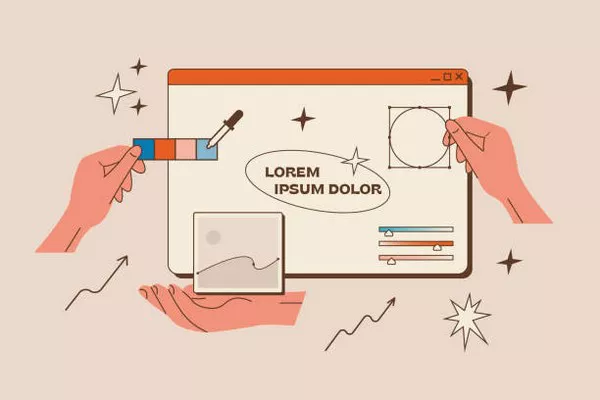In the ever-evolving world of web design, staying ahead of trends and technologies is crucial for creating engaging and user-friendly websites. One such trend that has made a significant impact is parallax web design. This technique, once considered a novelty, has become a staple in modern web development due to its ability to create visually stunning and interactive user experiences. This article delves into the intricacies of parallax web design, exploring its definition, benefits, implementation techniques, and best practices.
What is Parallax Web Design?
Parallax web design is a technique that creates an illusion of depth and immersion by moving different layers of content at different speeds as a user scrolls through a website. This effect is achieved by layering images, text, and other elements and applying different scrolling speeds to each layer. The result is a dynamic and visually engaging experience that draws users into the content.
The term “parallax” originally comes from the field of astronomy, where it refers to the apparent shift in the position of an object when viewed from different angles. In web design, this concept translates into the visual shift of elements to create a sense of depth and movement on the screen.
Benefits of Parallax Web Design
Enhanced User Engagement: Parallax design can significantly boost user engagement by providing a more interactive and immersive experience. Users are often more likely to spend time exploring a website that offers dynamic and visually appealing elements.
Improved Visual Appeal: The depth and movement created by parallax effects can make a website stand out from the competition. This can be particularly beneficial for brands looking to create a memorable first impression.
Storytelling Opportunities: Parallax design can be used to tell a story by guiding users through different sections of a website. This can be effective for showcasing products, services, or content in a narrative format.
Increased Conversions: By creating a more engaging and visually appealing experience, parallax design can lead to higher conversion rates. Users who are captivated by the design are more likely to take desired actions, such as making a purchase or signing up for a newsletter.
Implementing Parallax Web Design
Implementing parallax effects requires a combination of HTML, CSS, and JavaScript. Here’s a breakdown of the process:
Designing the Layers: Begin by designing the different layers that will be used in the parallax effect. These layers can include background images, foreground images, text, and other elements. Each layer should be created with the desired visual effect in mind.
HTML Structure: Create the HTML structure for your parallax website. This typically involves setting up a container for each layer and positioning them accordingly.
CSS Styling: Apply CSS to position and style the layers. Use the background-attachment property to create a fixed background effect, and adjust the position of each layer to create the desired parallax effect.
JavaScript Enhancements: For more advanced parallax effects, you can use JavaScript libraries such as parallax.js or ScrollMagic to control the movement of layers based on user scrolling. These libraries offer more precise control over animations and interactions.
Best Practices for Parallax Web Design
Performance Optimization: Parallax effects can be resource-intensive, especially on mobile devices. Ensure that your website is optimized for performance by compressing images, minimizing JavaScript, and using efficient CSS. Test your design across different devices and browsers to ensure smooth performance.
Accessibility Considerations: Ensure that parallax effects do not hinder the accessibility of your website. Provide alternative text for images, ensure that text is readable, and make sure that the design does not create a disorienting experience for users with visual impairments or motion sensitivity.
Mobile Responsiveness: While parallax design can enhance user experience on desktop devices, it’s essential to consider how it translates to mobile. Many mobile devices have limited processing power, so implement parallax effects carefully to avoid performance issues. Consider using simplified effects or disabling parallax on mobile if necessary.
Content Prioritization: Ensure that the parallax effects do not overshadow the content. The primary goal of any website is to communicate information effectively. Use parallax design to complement and enhance content, not to distract from it.
Testing and Feedback: Regularly test your parallax design with real users to gather feedback and identify areas for improvement. User feedback can provide valuable insights into how the parallax effects impact the overall user experience.
See Also 8 Strategies for Marketing Your Freelance Web Design Services
Conclusion
Parallax web design offers a powerful way to create visually captivating and interactive websites. By leveraging the illusion of depth and movement, designers can enhance user engagement, improve visual appeal, and tell compelling stories through their web pages. However, successful implementation requires careful consideration of performance, accessibility, and content prioritization.
As with any design trend, it’s essential to use parallax effects judiciously and in alignment with the goals of your website. By following best practices and staying informed about emerging technologies, you can create a parallax web design that not only impresses users but also delivers a seamless and effective browsing experience.
You Might Be Interested In
- How Much Is Web Design In The Philippines
- Managing Web Design Projects: Best Practices and Strategies
- Mastering Google Web Design: A Comprehensive Guide

